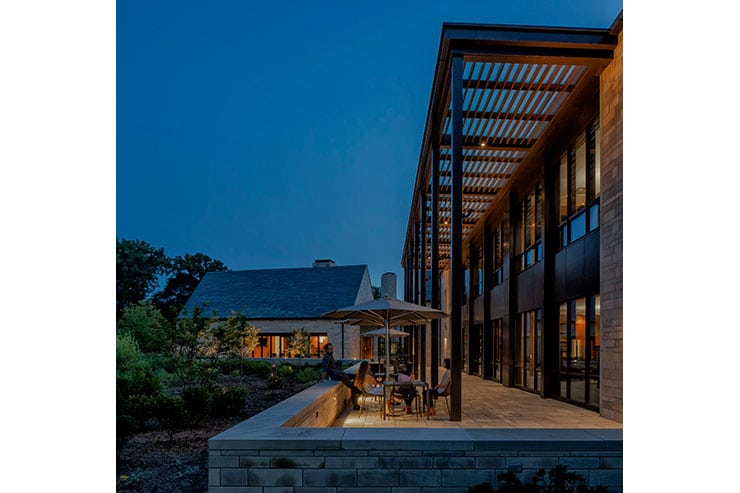- ABOUT
- JUDGING
- CONTACT
- MORE
- 2024 Entries
- Installations 2024
- Past Winners
- Subscribe
- [d]arc directory
- arc magazine
- darc magazine
Edsel & Eleanor Ford House Visitor Center and Administration Building, USA
ProjectEdsel & Eleanor Ford House Visitor Center and Administration BuildingLocationMichigan, USALighting DesignSmithGroup, USAClientThe Ford HouseLighting SuppliersSelux, Bega, BK, Ecosense, LED LinearPhotographyJustin Maconochie
Edsel and Eleanor Ford built an 87-acre estate situated on Lake St. Claire outside of Detroit, Michigan, USA. The Ford family loved to welcome guests to their home which is why opening the estate to the public was a natural transition after Eleanor’s death in 1976. The project scope includes an administration building for Ford House operations, a visitor’s center filled with amenities, and sitework that provides beautiful views to nature and extends public gathering outdoors. The Ford House’s commitment to sustainability also provided a unique opportunity: targeting net-zero energy consumption for the administration building.
The concept of “welcoming connections” guided the lighting design solution to deliver an experience that is inviting, exudes hospitality, and provides stylistic connections between the historic homestead and its owners’ generous legacy. Lighting reinforces the architectural strategy to offer a contemporary complement to the Ford homestead’s Cotswold architectural style. The design solutions balance the requirements for public space criteria yet reinforce a residential character reflective of the comforting qualities of a home. The inviting character is primarily conveyed through use of warm color temperature light, wood and stone material accents, and lighting visual hierarchy that draws the eye to both the building interior and exterior courtyard. The notion of connection is reinforced by accentuating the Cotswold architecture, enhancing gathering spaces, and integrating artful lighting detailing. Approaching the site, subtle façade wall washers are juxtaposed with interior warmth, drawing guests into gathering spaces. This layer of vertical brightness targets 5:1 ratio from base to façade mid-point and 0 cd/m2 at façade top. The design paired with curfew controls limit uplight given adjacent wildlife habitats. Integrated site wall path lighting and concealed, visually comfortable trellis accent lighting pair with landscape highlights, creating a multi-layered outdoor special event visual experience. Trellis highlights provide vertical stone brightness hierarchy for entrance wayfinding and overhead accent to café and social space outdoor seating. A key challenge to achieving the trellis lighting solution was concealing fixtures and power conduit. Indirect lighting hides within stone column enclosures, while micro spotlights tucked within trellis members provide column accent.
Additional project challenges included: lowered power density targets for the administration building to meet net-zero energy (0.5W/SF comprehensively), limitation of site lighting given site context and wildlife stewardship, budget directives resulting in several alternate design options, and convincing contemporary design elements over the client’s traditional aesthetic tastes. An example of the latter challenge was proposing full-cutoff minimalist site area lighting in lieu of traditional aesthetic omnidirectional lanterns. Full-scale mockups confirmed detail strategies, color temperature variations, and overall composition. Additionally, annual climate and daylighting analysis informed building orientation, external sun shading for energy load reduction and visual comfort, and photovoltaic power generation. Incorporating mature tree annual contextual shading validated the on-site power generation potential, which was a unique analysis utilizing daylighting tools. This project invites guests to celebrate and learn about the past, present, and future of the Ford House, extending the Ford legacy for generations to come.








